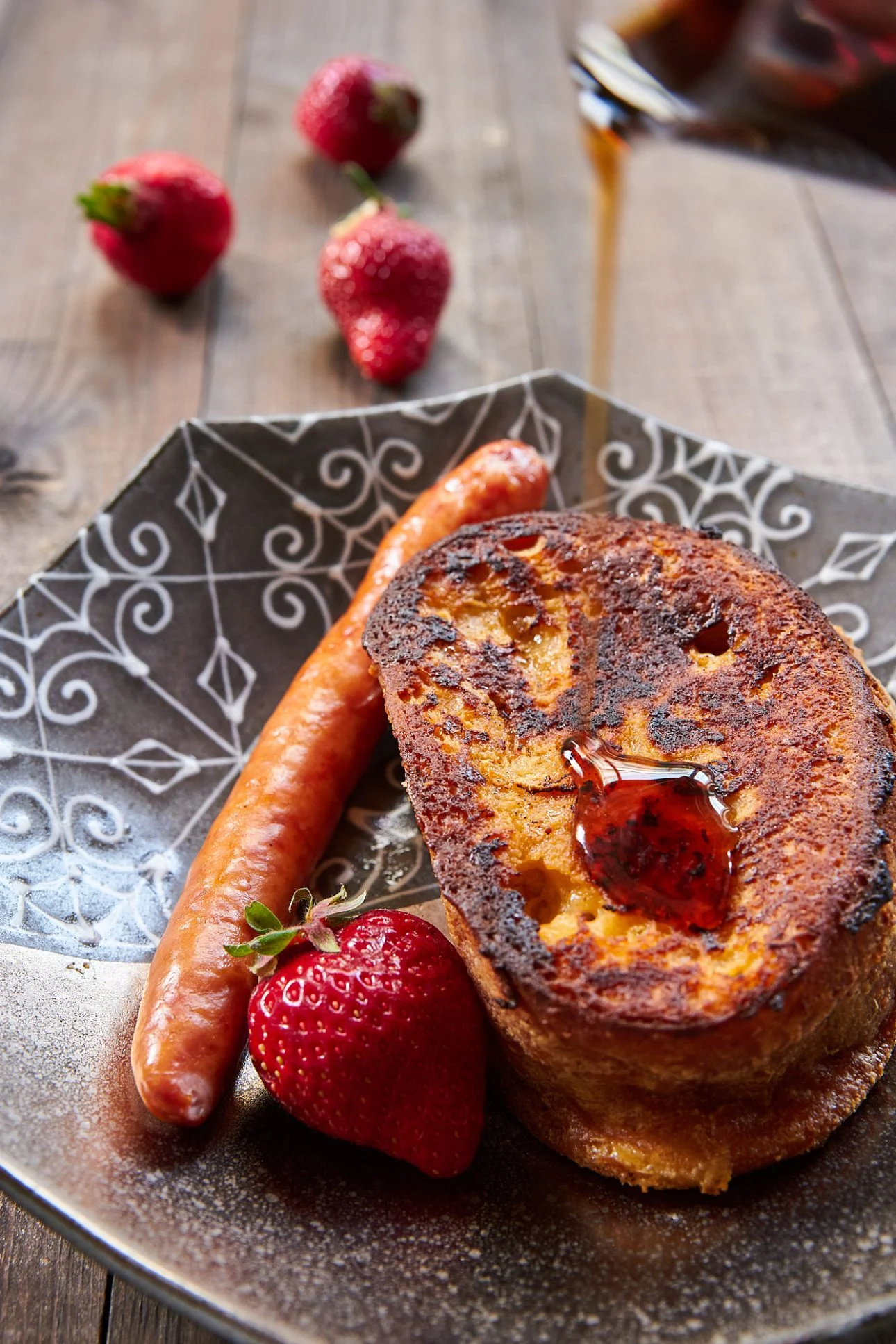When it comes to breakfast, the French know how to start the day right. With a rich culinary tradition, French breakfasts offer a mix of sweet and savory delights that are sure to tantalize your taste buds. Have you ever wondered what makes French breakfast foods so special?
Exploring French breakfast foods can give you a taste of France without leaving your home. From delicate pastries to hearty charcuterie, you’ll discover a range of flavors that highlight the best of French cuisine.
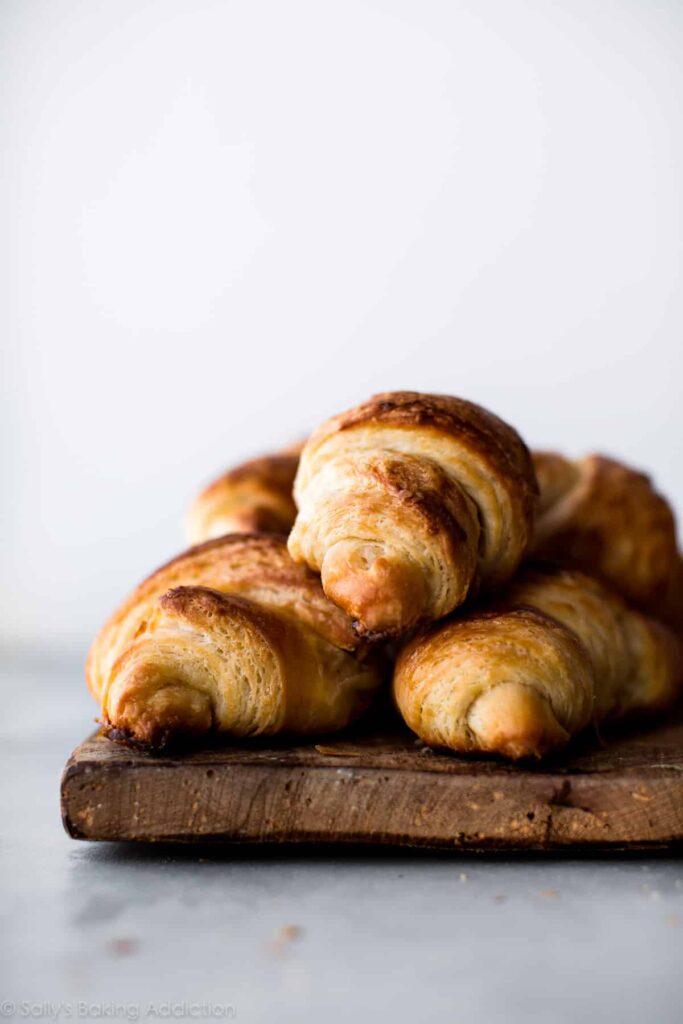
1) Croissant
A croissant is a staple of French breakfasts and is known for its flaky, buttery layers. You can find them in almost every French bakery. They are especially famous for their crescent shape.
Croissants are made from dough layered with butter, folded several times to create the flaky texture. When you bite into a croissant, you get a crispy outside with a soft, airy inside.
Look for bakeries with the label “Boulanger de France.” This means the croissants are made on site, ensuring freshness. Enjoy your croissant with a cup of coffee or as a tasty treat on its own.
In France, croissants are often eaten plain, but they can also be served with jam or chocolate spread. Their versatility makes them a favorite among both locals and tourists.
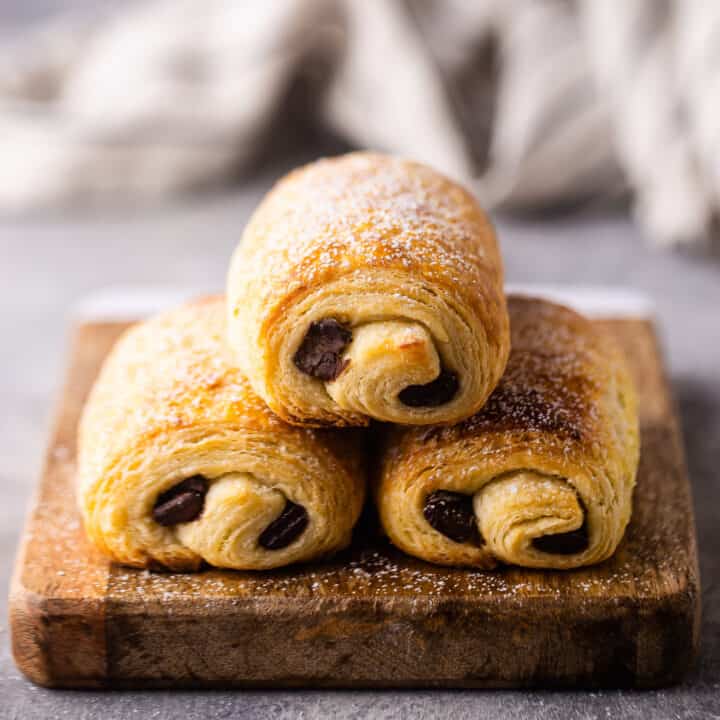
2) Pain au Chocolat
Pain au chocolat is a popular French breakfast pastry. It consists of a buttery, flaky dough with a piece of chocolate in the center. The pastry is rolled into a rectangular shape and baked until golden brown.
You might enjoy pain au chocolat with a cup of coffee or hot chocolate for breakfast. The rich, sweet taste pairs well with coffee’s bitterness or hot chocolate’s creamy richness.
Aside from its taste, pain au chocolat is admired for its layers. Each bite delivers a satisfying crunch, followed by a soft, chocolatey center. It’s often enjoyed fresh from the oven, still warm, and oozing with melted chocolate.
Finding authentic pain au chocolat is best done at French bakeries. Look for places that bake their pastries on-site, ensuring freshness and quality. These establishments often take great pride in their craftsmanship and use traditional methods.
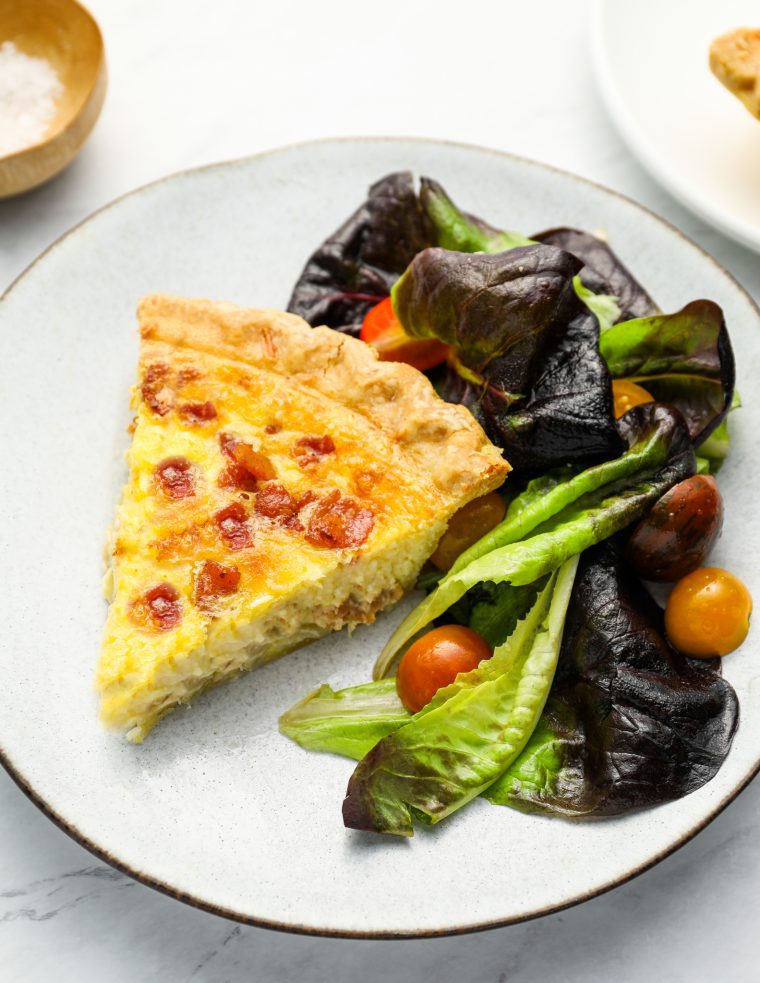
3) Quiche Lorraine
Quiche Lorraine is a savory tart that hails from the Lorraine region of France. You can enjoy it warm or at room temperature. It’s made with a buttery, flaky crust filled with a creamy mixture of eggs, cream, bacon, and Gruyère cheese.
To prepare Quiche Lorraine, start by rolling out your pie crust and pressing it into a tart pan. Freeze the crust for a short time, then pre-bake it to ensure it stays flaky.
For the filling, whisk together eggs, heavy cream, salt, and a pinch of nutmeg. Cook your bacon until crispy and drain off the excess fat. Spread the bacon and some cheese over the bottom of the cooked crust.
Pour the egg mixture over the bacon and cheese, then bake your quiche until the filling is set and a knife comes out clean when inserted in the center. This dish pairs well with a simple green salad or fresh fruit for a balanced breakfast.
Quiche Lorraine is popular for its rich flavors and versatility. Whether you serve it at a brunch gathering or as a hearty family breakfast, it’s sure to please. It can also be made ahead of time and reheated, saving you time on busy mornings.
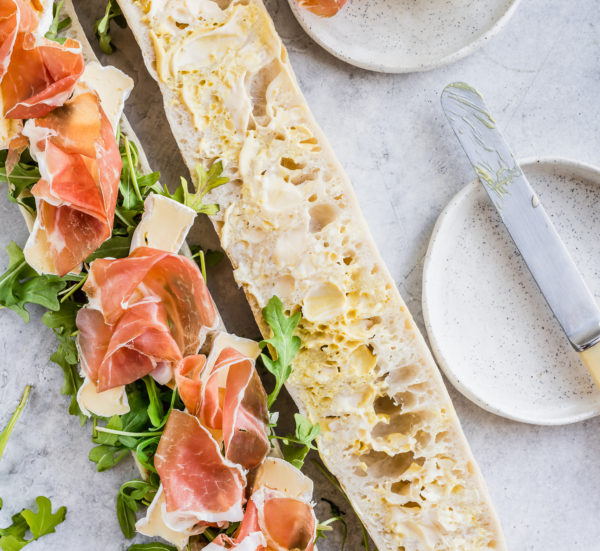
4) Baguette with Butter and Jam
In France, a classic breakfast often includes a baguette with butter and jam. The baguette is a long, thin loaf of French bread with a crisp crust and a soft, airy interior.
To enjoy this dish, start by slicing the baguette lengthwise. Spread a generous layer of butter over each half. Choose high-quality butter for the best flavor.
Next, select your favorite jam. Common choices include strawberry, raspberry, or apricot. Spread the jam over the buttered slices.
Baguette with butter and jam is simple yet delicious. It combines the crunch of the bread, the creaminess of the butter, and the sweetness of the jam. This dish is often enjoyed with a cup of coffee or a café au lait.
You can find this breakfast in many French homes and cafes. It’s a quick and satisfying way to start your day.
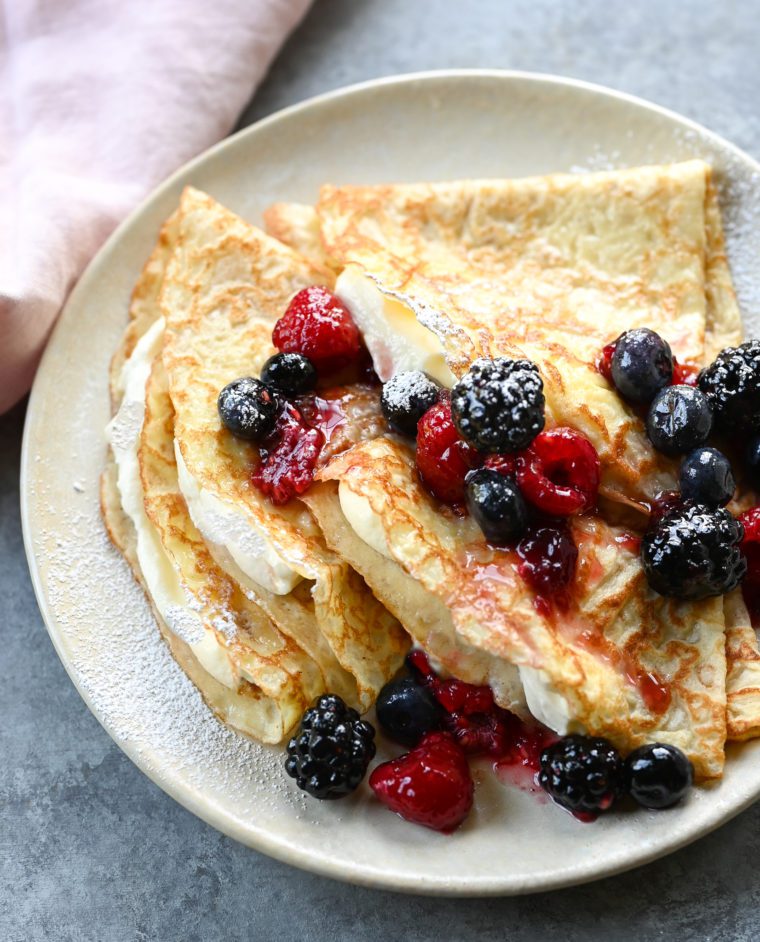
5) Crêpes
Crêpes are a classic French breakfast item. They are thin pancakes that can be filled with many different things.
You can make crêpes sweet or savory. For sweet crêpes, you might use jam, Nutella, or fresh fruits. For savory crêpes, fillings like ham, cheese, or eggs are common.
To make crêpes, you need just a few basic ingredients. These include milk, eggs, flour, a pinch of salt, and a bit of sugar. You can add vanilla extract for extra flavor if you want.
Cooking crêpes is simple. Pour a small amount of batter into a hot, greased pan, and then quickly spread it out to form a thin layer. Cook for about one minute on each side until golden brown.
Crêpes are versatile and fun to make. You can get creative with the fillings and toppings to suit your taste. Enjoy them plain or dressed up with your favorite ingredients.
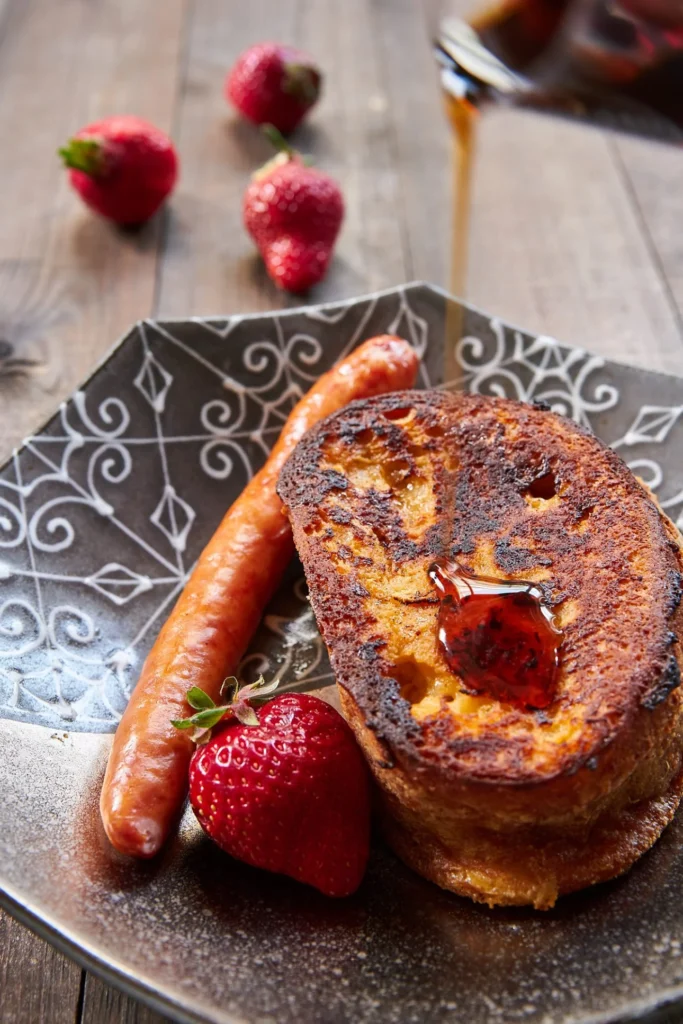
6) Pain Perdu
Pain Perdu is the original French toast and is a delightful way to start your day.
To make Pain Perdu, you first need to prepare a mixture of eggs, milk, sugar, and vanilla. Some recipes add a splash of rum or brandy for extra flavor. Whisk the ingredients together until smooth.
Cut your bread into thick slices, about 1 to 2 inches each. Baguettes work great, but any bread will do.
Dip the bread slices into the egg mixture. Make sure each slice is well-soaked.
Cook the soaked bread slices in a hot, buttered pan until they are golden brown and slightly crispy on each side. The inside should be soft and tender.
Finish by baking the slices in the oven for a few minutes. This helps ensure the inside is cooked through and the outside stays crispy.
Serve warm. You can top Pain Perdu with powdered sugar, fresh fruit, or syrup. Enjoy this classic French breakfast with your favorite toppings!
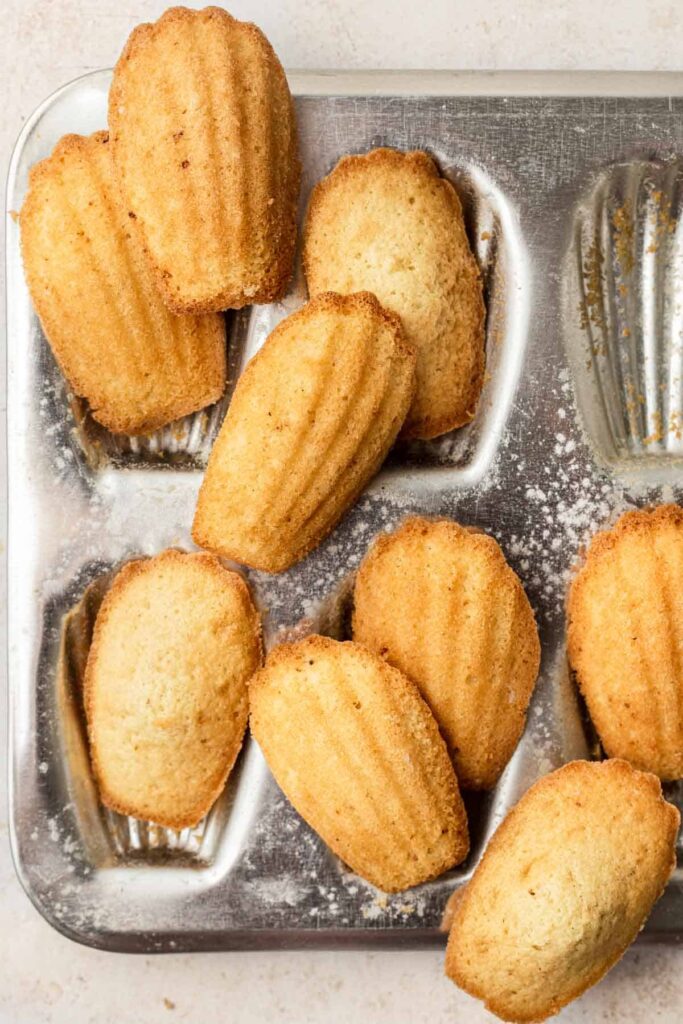
7) Madeleine
Madeleines are small, shell-shaped sponge cakes that originate from France. They have a distinct scalloped edge, thanks to the specially designed pans they are baked in.
To make madeleines, you first mix eggs with sugar until the mixture is light and fluffy. Then, you add flour, baking powder, lemon zest, milk, and melted butter. This blend gives madeleines their characteristic light and airy texture.
Chill the batter in the refrigerator for at least an hour. This step helps achieve the madeleines’ signature hump.
When you’re ready to bake, use a pastry brush to coat the madeleine molds with melted butter. Dust the molds lightly with flour to prevent sticking.
Preheat your oven to the correct temperature, which is usually around 375°F (190°C). Fill each mold with batter, but be careful not to overfill.
Bake the madeleines until they are golden brown. This usually takes about 10-12 minutes. The cakes should spring back when pressed lightly in the center.
Enjoy madeleines fresh from the oven, as their light and delicate flavor is best when they are freshly baked.
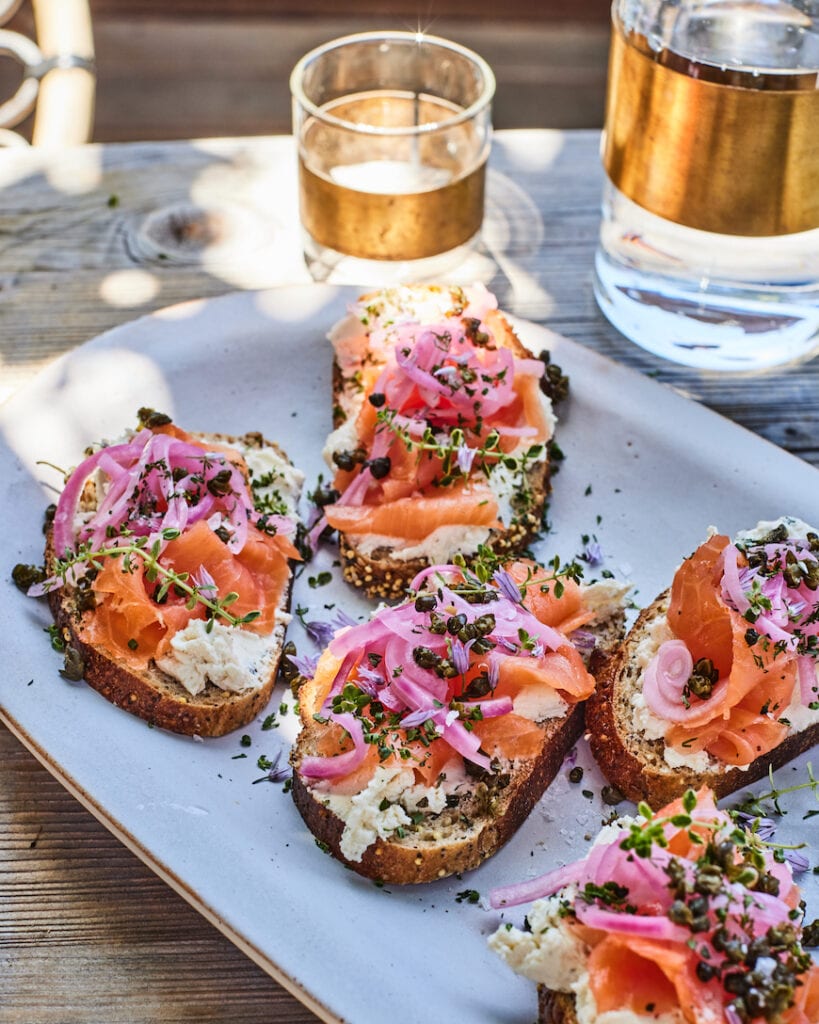
8) Tartine
A tartine is a classic French breakfast option that you’ll love. It’s essentially an open-faced sandwich. The base is usually a fresh baguette sliced lengthwise. You can toast it for extra crunch.
Tartines are versatile, allowing you to top them with various ingredients. Butter and jam are popular choices for a simple tartine. Nutella is another favorite, especially for those with a sweet tooth.
For a more savory option, you might top your tartine with fresh ingredients like tomatoes, herbs, and cheese. Sautéed asparagus and prosciutto can also make for an elegant and delicious tartine.
This dish offers an easy way to enjoy French bread and lets you customize each bite to your liking.

9) Chausson aux Pommes
Chausson aux Pommes are delicious French apple turnovers. They are made with puff pastry and filled with a sweet apple compote. The flaky, golden-brown crust pairs wonderfully with the tender, spiced apples.
To make Chausson aux Pommes, roll out your puff pastry to a large square. Cut out your desired shapes, often triangles or semicircles. Fill each piece with apple filling and fold them closed, sealing the edges well.
Brush the tops with egg wash for a shiny finish. You can add a decorative touch by scoring a leaf pattern on the surface. After baking, you can brush them with a sugar syrup and return them to the oven briefly to caramelize.
Chausson aux Pommes are a perfect treat for breakfast or brunch. They can be enjoyed warm from the oven or at room temperature. Pair them with a cup of coffee or tea for a delightful French breakfast experience.
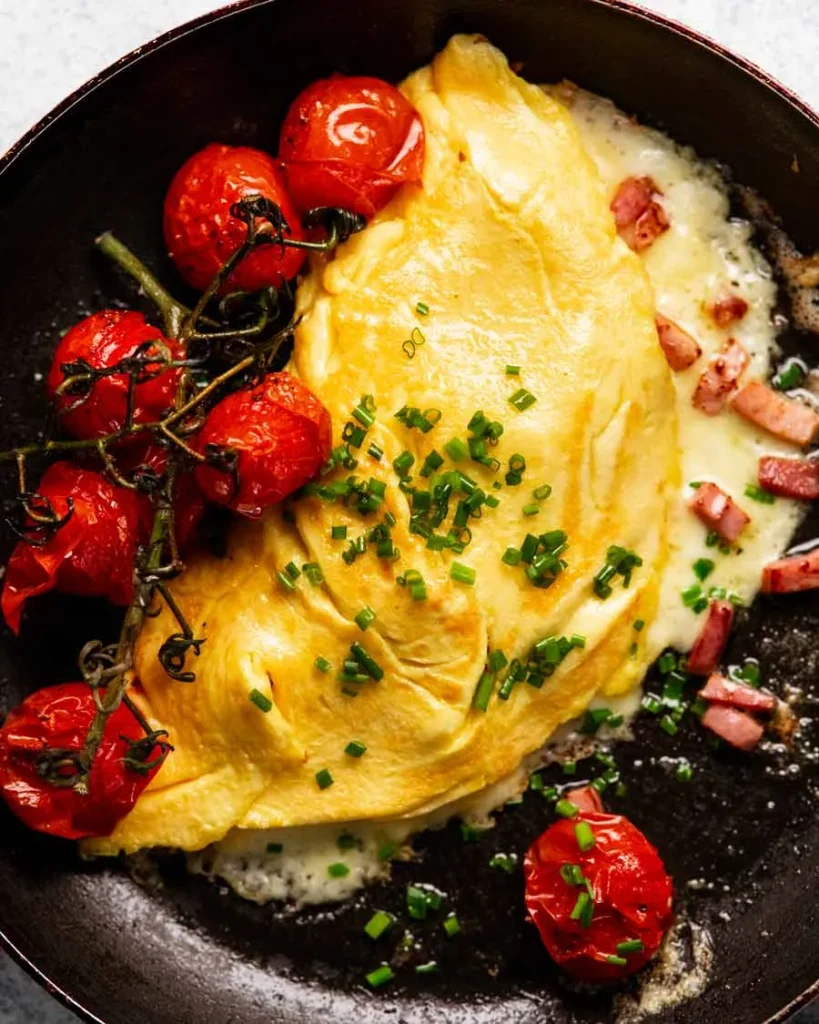
10) Omelette du Fromage
Omelette du Fromage, also called a cheese omelette, is a classic French breakfast dish. It’s simple yet rich in flavor.
Start by beating eggs with a pinch of salt and pepper in a bowl. You can use a fork for this. Heat a small amount of butter in a frying pan until it melts and turns slightly golden.
Pour the beaten eggs into the pan. Let them cook for a few minutes. Once the eggs begin to set, sprinkle your favorite cheese, like Gruyere or cheddar, over the top.
Fold the omelette into thirds using a spatula. Cook for another minute until the cheese melts and the eggs are fully set.
Serve your Omelette du Fromage hot. This dish pairs well with a fresh baguette or a side salad. It’s quick to make and can be a hearty start to your day.
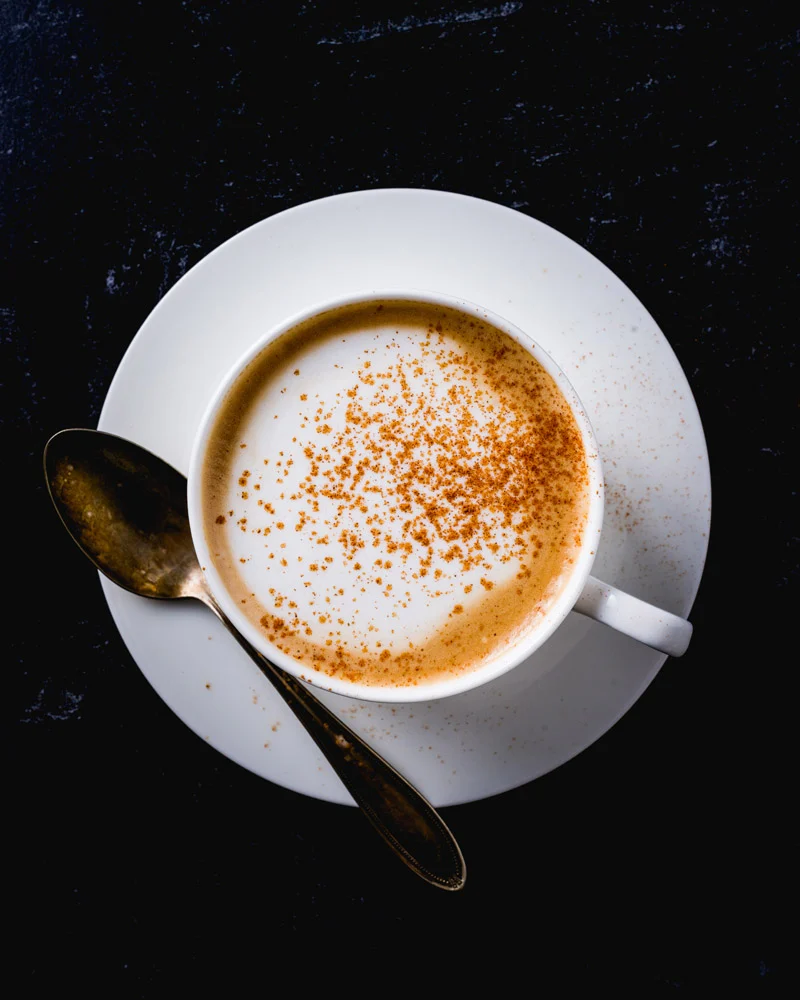
11) Café au Lait
Café au lait is a classic French breakfast drink. It simply means “coffee with milk.”
The coffee in a café au lait is usually quite strong. A typical choice is dark roast coffee or espresso.
To make a café au lait, you combine this strong coffee with steamed milk. The milk adds a creamy texture and softens the coffee’s intensity.
Many people enjoy café au lait in the morning. It’s a warm, comforting drink that can ease you into the day.
You can enjoy a café au lait with pastries like croissants or pain au chocolat. This combination is a popular French breakfast choice.
Making a good café au lait at home is easy. Brew strong coffee, steam some milk, and mix them together. If you prefer, you can add sugar for extra sweetness.
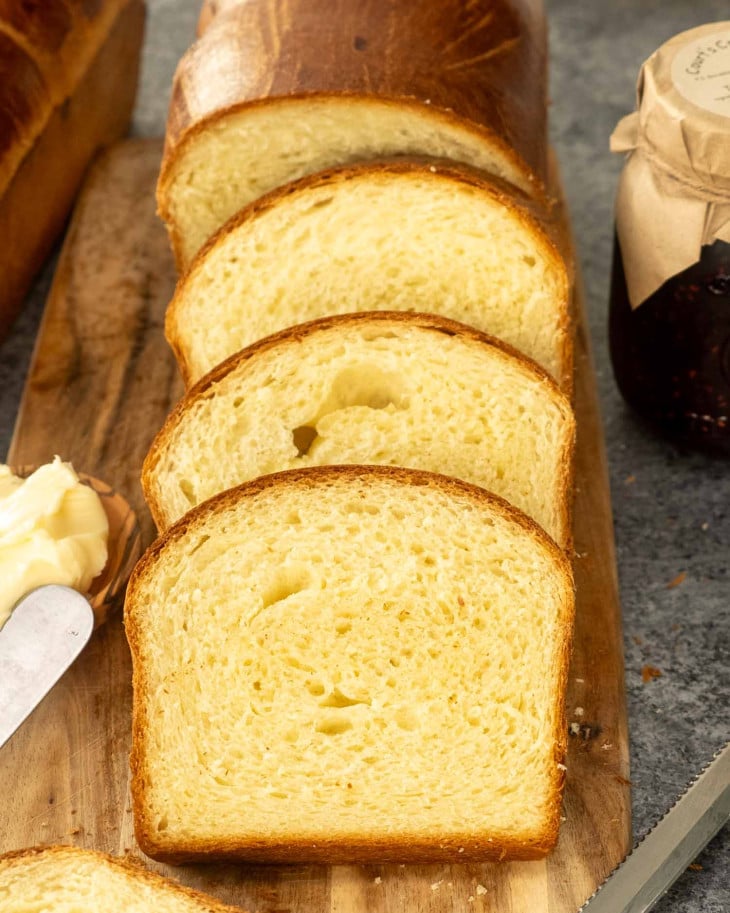
12) Brioche
Brioche is a staple in French breakfast cuisine. This bread feels like a cross between a loaf of bread and a dessert. It’s rich with butter and eggs, which makes it tender and soft.
You can enjoy brioche in many ways. Try it toasted with a pat of butter or some jam. It also makes an excellent base for French toast, adding an extra layer of indulgence.
Brioche is slightly sweet, which matches well with both sweet and savory toppings. You might pair it with cheese or ham for a balanced meal. It’s versatile and fits well into various breakfast menus.
This bread can also be found in French bakeries in different forms. Some have chocolate or sugar sprinkled on top. Each bite offers a taste of France’s rich baking tradition.

13) Petits Pains
Petits pains are small, often round bread rolls that are a staple of French breakfasts. These delightful rolls have a crisp crust and a soft, airy interior. They are perfect for spreading butter, jam, or even some cheese.
You can enjoy petits pains warm out of the oven, which enhances their flavor. They are often served alongside a cup of coffee or tea in the morning. These rolls can also be used to make small sandwiches with various fillings.
Making petits pains at home can be a rewarding experience. The dough usually contains basic ingredients like flour, yeast, water, salt, and sometimes a bit of sugar. After mixing and kneading, the dough is left to rise before being shaped into small rolls and baked.
Petits pains are versatile and can be found fresh at most French bakeries each morning. They offer a simple yet satisfying start to your day. Their lightly crusty exterior and fluffy inside make them a beloved part of the breakfast table across France.
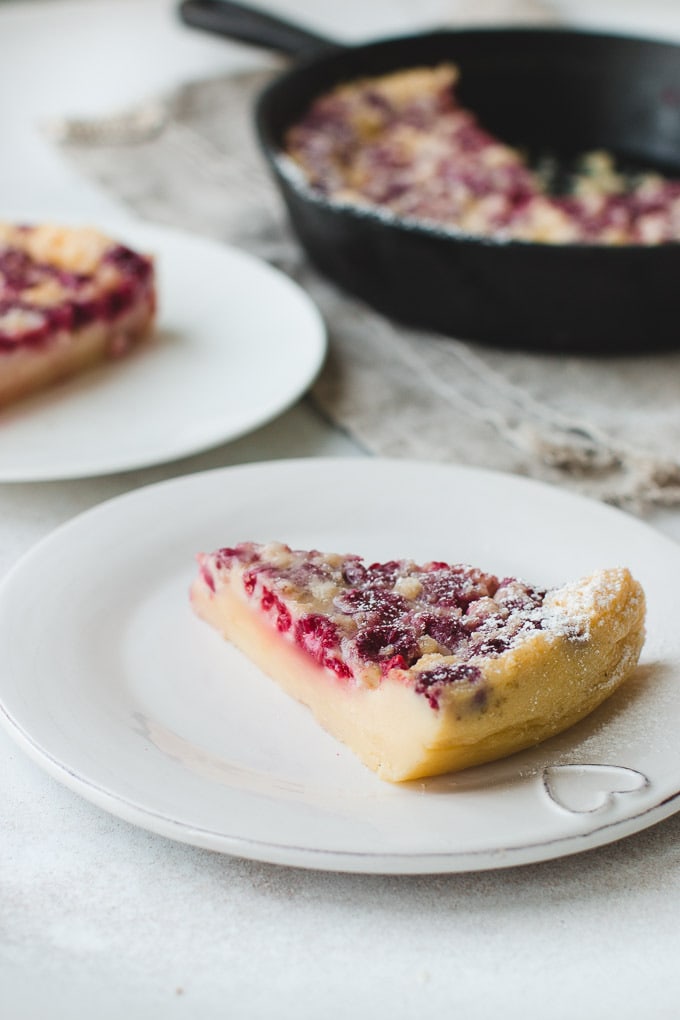
14) Clafoutis
Clafoutis is a classic French breakfast dish that combines fruit and a flan-like batter. It’s traditionally made with black cherries but can be versatile with other fruits like strawberries or plums.
To make clafoutis, you’ll need basic ingredients like eggs, milk, sugar, and flour. The batter is usually poured over the selected fruit arranged at the bottom of a baking dish.
Baking clafoutis is simple. Preheat your oven to 350°F (175°C) and grease a baking dish with butter. Pour the batter over the fruit and bake until it’s golden brown and puffed up, usually about 20 to 40 minutes.
Clafoutis is typically served warm and can be dusted with powdered sugar. It has a texture that lies somewhere between a cake and a custard, making it both a delicious and unique breakfast option.
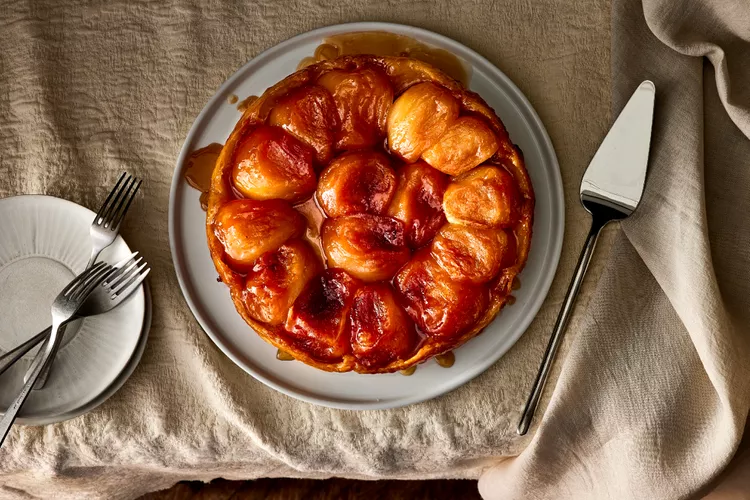
15) Tarte Tatin
Tarte Tatin is a classic French dessert that you can enjoy for breakfast. It’s an upside-down caramelized apple tart, pairing perfectly with a cup of coffee.
To make it, melt butter with sugar and vanilla in a cast iron skillet. Once the sugar dissolves, add apple quarters and cook until they soften.
Prepare a flaky pastry, rolling it to a thin round. Place it over the cooked apples in the skillet. Bake until the pastry is golden brown.
When it’s done, invert the tart onto a plate, revealing the glossy, caramelized apples. The rich, buttery flavors will make your breakfast special.
History of French Breakfast Cuisine
French breakfast has transformed from hearty meals to light, elegant snacks. Influences from various regions have shaped its present form.
Origins and Evolution
French breakfast, or petit déjeuner, has shifted significantly over centuries. In the 1600s, breakfast was a savory meal called déjeuner, featuring hearty dishes. By the 19th century, the French morning meal became simpler. Coffee or hot chocolate paired with bread, butter, and jam became common.
Baguettes, croissants, and pastries like pain au chocolat emerged as breakfast staples. The shift from hearty meals to light breakfasts reflects changes in lifestyle and work habits. Today, French breakfasts are known for their simplicity and elegance, often enjoyed at local cafés.
Influences from Regional Cuisines
France’s diverse regions contribute unique flavors to breakfast cuisine. In Normandy, dairy products like fresh butter and creamy cheeses are breakfast favorites. In Brittany, crêpes and galettes made from buckwheat flour are traditional morning foods.
The southern regions of Provence and the Côte d’Azur incorporate Mediterranean ingredients such as olives, tomatoes, and herbs. These regional influences add variety and richness to French breakfasts, making them distinctive and full of character. Regional specialties complement national favorites like croissants, enhancing the overall breakfast experience in France.
Key Ingredients in French Breakfast Foods
French breakfast foods are known for their rich flavors and delicate textures. To achieve this, specific ingredients are commonly used. These include the staples of French pastry and important spices and flavorings.
Common Pastry Ingredients
French pastries like croissants, pain au chocolat, and brioche rely heavily on a few key ingredients.
Flour is crucial as it provides structure. French bakers often use a high-protein flour for the perfect texture.
Butter is another essential component. It must be of high quality, preferably European-style for its higher fat content. This gives pastries their characteristic flakiness and richness.
Eggs add both moisture and richness to the dough. They also help bind the ingredients together.
Sugar contributes sweetness and helps in browning during baking. For certain pastries like brioche, a hint of sugar is added to enhance the flavor.
Finally, yeast is used to leaven the dough, making it rise and become airy. Fresh or dry yeast can be used, but the process can be time-consuming, with long proofing times ensuring textures are light and fluffy.
Essential Spices and Flavorings
While French pastries are often about the dough, subtler ingredients play a vital role in flavor.
Vanilla is a staple in French baking. Often used in the form of vanilla extract or beans, it adds a sweet and aromatic depth to pastries and custards.
Cinnamon might not be the most traditional French spice, but it is sometimes used in breakfast items like pain aux raisins for a warm, spicy note.
Almonds in various forms—sliced, whole, or as almond paste—bring a nutty sweetness to many items, including croissants aux amandes.
Lemon zest is often added for a fresh, citrusy twist that balances the richness of butter and sugar.
Chocolate appears in various breakfast foods, from pain au chocolat to hot chocolate. High-quality dark chocolate is preferred for its intense flavor.
These spices and flavorings transform basic dough into the exquisite pastries and recipes French cuisine is famous for.
